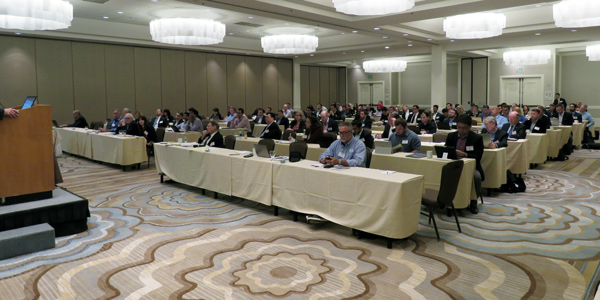By Jason Fordney
REDONDO BEACH, Calif. — California’s grid reliability will be increasingly at risk if the state doesn’t soon address its unfocused approach to resource adequacy planning, industry experts said last week.
Panelists at Infocast’s California Energy Summit criticized the policy drift leading to an increasing reliance on reliability-must-run contracts for gas-fired units. They called for a more focused effort to address RA needs as the state brings on a growing volume of renewable resources.
The consensus among the panelists: that RA has become extremely complicated, and commenters during the conference several times touched on a recent “greenbook” report issued by the California Public Utilities Commission that warns that the state’s fragmented decision-making around capacity risks a return to the conditions preceding the Western energy crisis of 2000/01. (See CPUC Cautions of Return to Bad Old Days.)
Jan Smutny-Jones, CEO of the Independent Energy Producers Association, was blunt in his assessment of the situation, saying he has “some very real concerns about the direction the state is currently headed.”
“My job today it to bring you tales of fear and loathing,” he said. “I think that we are short of the RA market for a really long time.” He added that “I don’t think Calpine is responsible for this RA problem,” and that the RMRs are a consequence of the state failing to adequately deal with RA.
“This is insurance. This is very boring except when it isn’t, and when it isn’t, we run into big problems,” Smutny-Jones said. He cautioned that while the momentum for decarbonizing the California grid is not going to abate, it must not compromise reliability and affordability.
Last November, CAISO said California’s investor-owned utilities were about 2,000 MW short of local RA requirements for 2018. The ISO joined with utilities in asking the CPUC to reform the RA program because the state’s resource fleet is quickly shifting to more renewables, which create a need for RMRs. The ISO acknowledged that the situation is not the fault of companies threatening the retirement of gas-fired units, but rather the result of deficiencies in the RA program. (See California Utilities Short on Local RA Capacity.)
“We are sort of the poster child for the failure of the resource adequacy program,” Calpine Director of Market and Regulatory Analysis Matt Barmack said during a panel Wednesday, describing his company’s efforts to secure financial support for struggling generating units. The company has about 5,500 MW of gas-fired and other resources, such as the Big Geysers geothermal plant in California.
Calpine’s Yuba City, Feather River and Metcalf gas plants, totaling about 700 MW, are contracted under CAISO’s RMR program, which provides out-of-market payments to gas units that don’t make adequate revenue to stay in operation but are needed to provide reliability. (See FERC Approves CAISO-Calpine RMR Settlements.)
Barmack said Calpine saw the RMRs “as the only vehicle to get the certainty of compensation we needed just to get the maintenance on these three units that was required.” The current timeline of the state’s RA program finishes late in the year and doesn’t provide forward certainty for suppliers, he added.
James Caldwell, an adviser to the Center for Energy Efficiency and Renewable Technologies said that California’s current focus is on meeting greenhouse gas goals by a certain year but that urgent RA procurement problems should be addressed. The center is a partnership between environmental groups and renewable energy producers that advocates for the growth of renewables in California and the West.
“Let’s get on with it; let’s do what we know we need to do, and do it now,” Caldwell said. If there are significant reliability problems or blackouts, “everybody in this room will probably lose their job.
“The main thing we have to do is have a sense of urgency,” he said, and not wait until there are reliability problems. Gas plants will be needed for a while, but decarbonization of the electricity grid is incompatible with attaining reliability services from fossil fuel plants, he said.
“What it requires are some changes in thinking,” he said, including revising tariff structures, contracting and planning assumptions, rather than a focus on generation technologies. More optionality is needed in RA planning and finding a way to eventually attain reliability without gas plants, he said.
Martin Wyspianski, Pacific Gas and Electric’s senior director of renewable energy, told the forum that the key issue with RA is recognizing that the market is changing. California has brought on a great deal of renewables very quickly, he said, referring to the infamous “duck curve,” which illustrates the impact of solar growth on the state’s ramping needs.
“What CAISO was saying a few years ago was 20 years out is actually happening today,” Wyspianski said, noting that peak demand has shifted from late afternoon to evening as the transition to more renewables occurs, resulting in high pricing at certain periods.
“We are starting to see some of the effects of that shift,” which could signal a worsening situation down the road, he said.






